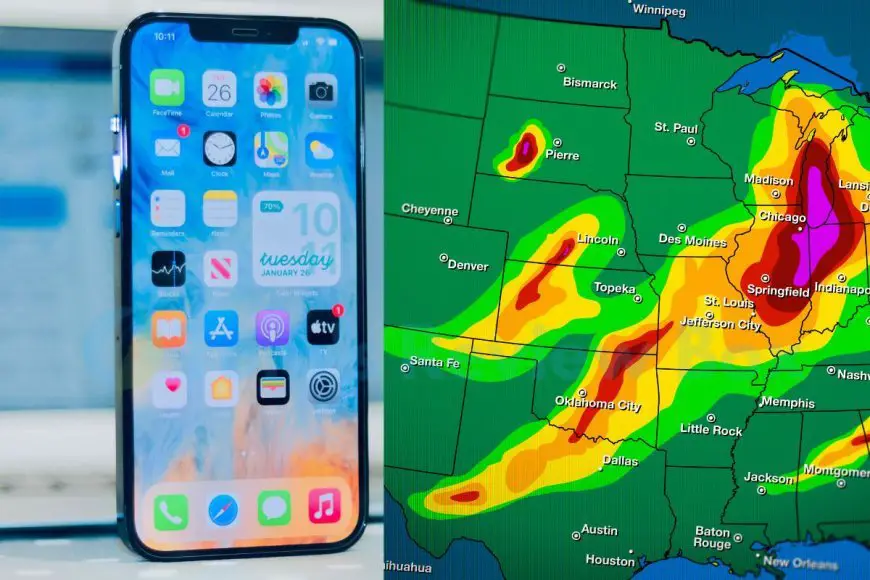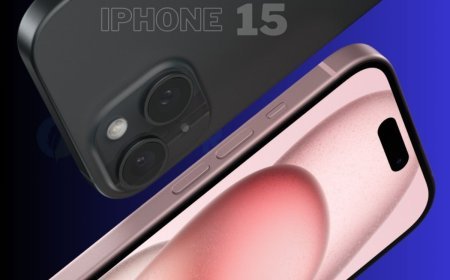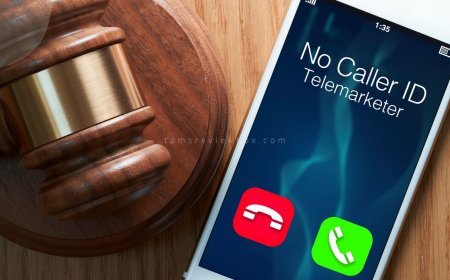How to Delete Weather Location on iPhone: Understanding, Adding, and Troubleshooting
Learn how to easily delete weather locations on your iPhone. Troubleshoot and remove cities from the weather app with our step-by-step guide.

Tired of seeing irrelevant weather locations cluttering your iPhone's weather app? We've got you covered. Deleting unwanted weather locations from your iPhone is a breeze once you know how. In this guide, we'll walk you through the simple steps to declutter your weather app and keep only the locations that matter to you.
Whether it's old vacation spots or cities you no longer need updates for, we'll show you how to effortlessly remove them from your weather app. Say goodbye to scrolling past unnecessary places and hello to a streamlined and personalized experience every time you check the weather forecast list.
Key Takeaways
- To delete weather locations on your iPhone, simply swipe left on the location and tap "Delete.
- When adding new locations, use the search bar in the Weather app and select the desired location from the results.
- Rearrange places by tapping and holding the location, then dragging it to the preferred position.
- Easily check weather in different locations by swiping left or right on the current location at the top of the Weather app.
- Explore advanced features such as setting up weather alerts and customizing units for temperature and wind speed.
- If encountering issues, troubleshoot by ensuring location services are enabled, and the Weather app has access to your location.
Understanding the Weather App
The Weather app on your iPhone allows you to stay updated with the latest weather conditions in various locations. By swiping left or right, you can easily switch between different locations to view their respective weather forecasts. For instance, if you have added New York and Los Angeles as your preferred locations, a simple swipe will enable you to seamlessly transition between these two cities' weather details.
Tapping on a specific location provides more detailed information about the current weather conditions, such as temperature, humidity levels, wind speed, and precipitation chances. Users can access hourly and daily forecasts for any selected location within the app. This feature is particularly helpful when planning outdoor activities or events in different areas.
When customizing settings in the Weather app, users have the flexibility to adjust various parameters according to their preferences. For example, they can modify temperature units from Celsius to Fahrenheit or vice versa based on their familiarity with specific units of measurement. Moreover, individuals who are interested in outdoor sports may prioritize wind speed data over other details by customizing this setting within the app.
Deleting Locations
Step-by-Step Guide
To delete weather locations on your iPhone, follow these simple steps. First, open the Weather app on your device. Then, tap on the location you want to remove from the list of saved locations. Once you've selected the location, swipe it to the left. A "Delete" option will appear; tap on it to remove the location from your list.
After deleting a location, you can also rearrange or customize the order of your remaining locations. Simply press and hold a location, then drag it up or down to reposition it in your preferred order.
If you're looking for more customization options, consider adding new locations that are important to you by tapping the "+" icon in the top-right corner of the screen and entering a city or ZIP code.
Troubleshooting Tips
Encountering issues with managing weather locations? Here are some troubleshooting tips for common problems:
- If you're having trouble adding new weather locations, ensure that Location Services is enabled for the Weather app in your iPhone's settings.
- In case you experience inaccuracies with weather information for specific locations, verify that your device has an active internet connection and try refreshing the app by pulling down on the screen.
- Should errors persist despite checking network connectivity, consider restarting your iPhone as this can help resolve temporary glitches affecting app settings.
Adding Locations
Search and Add
Adding new weather locations on your iPhone is a breeze with the search function. You can effortlessly find and add popular cities using this feature. For instance, if you want to track the weather in New York City or Paris, simply type in the city name and add it to your list of locations.
Moreover, the search feature allows you to efficiently look for specific towns or regions. Whether it's a small town nestled in the mountains or a remote island getaway, you can easily discover and include these unique destinations into your weather app.
If you're planning a trip abroad or have friends living in various parts of the world, adding multiple locations through search can help keep you informed about different places' weather conditions at all times.
Manual Entry
For those who prefer precise location setup, manual entry is an excellent option. By manually entering latitude and longitude coordinates, you can ensure that your selected location is accurately represented within your iPhone's weather app.
Manual entry enables users to add custom locations by inputting their names directly. This means that whether it's your favorite hiking spot deep within the forest or a secluded beach where you love to relax, these personalized destinations can be included in your list of tracked areas.
Rearranging Locations
Edit Mode - Enter edit mode to rearrange or delete existing weather locations
When you have added multiple locations to your iPhone's weather app, you may want to make changes. To do this, enter the edit mode on your weather app. This feature allows you to easily rearrange or delete the existing weather locations that you have saved. By accessing the edit feature, managing your list of cities becomes a breeze.
Utilize simple gestures and taps to access this functionality within the app. Once in edit mode, tap and hold on a location until it wiggles and displays a minus sign (-) icon. Then, tap on the minus sign next to each location that you want to remove from your list of saved places.
Drag and Drop - Rearrange the order of your saved locations by dragging and dropping them
After entering edit mode in your weather app, utilize drag-and-drop functionality for reordering your list of preferred weather locations. This means that once in editing mode, simply press down on any city name until it lifts off the screen slightly; then drag it up or down based on where you'd like it placed in relation to other cities listed.
For example, if "New York" appears at position three but should be at position one instead, just touch its name without lifting off immediately; hold onto it while moving upwards until reaching its desired spot before releasing fingers from holding onto phone’s display.
Checking Weather in Different Locations
Switching Cities
To delete weather locations on iPhone, start by tapping on the city name you want to remove. Then, swipe left to reveal the "Delete" button and tap it. This simple process allows you to effortlessly manage your list of saved cities.
For instance, if you have been checking the weather for a vacation destination or a place where your loved ones live, but no longer need this information readily available, removing it from your weather app can help declutter and streamline your experience.
Forecast Details
When using the iPhone's weather app, accessing detailed forecasts for different locations is straightforward. You can view comprehensive hourly and daily forecasts that include essential details such as temperature, humidity levels, wind speed, and more.
Imagine having plans for an outdoor event in another city; being able to access detailed upcoming weather conditions will help you make informed decisions about what to wear or whether certain activities are suitable based on the forecasted conditions.
Advanced Features
Weather Alerts
Customizing weather alerts on your iPhone can help you stay informed about specific weather conditions that matter to you. Whether it's a storm, snow, or any severe weather event, setting up personalized alerts ensures that you receive timely notifications for the locations you care about. Imagine getting a notification just before a heavy downpour hits your favorite hiking spot, allowing you to adjust your plans accordingly.
By customizing weather alerts, users can receive important updates tailored to their chosen locations. For example, if there's a sudden drop in temperature at your vacation destination, you'll be notified promptly so that you can pack appropriate clothing and gear.
Temperature Units
The ability to choose between Celsius and Fahrenheit on your iPhone's weather app provides flexibility based on personal preference. Switching between different temperature units is as simple as adjusting settings within the app. This feature allows users to personalize their temperature display according to their preferred unit without any hassle.
For instance, if someone is used to Celsius but travels frequently to countries where Fahrenheit is commonly used, being able to switch between these units makes it easier for them to understand and plan for the local climate.
Troubleshooting Common Issues
Find My iPhone Not Working
If you're having trouble with Find My iPhone, there are a few common issues you might encounter. Sometimes, the app may not accurately display the location of your device. This can be frustrating if you've misplaced your phone and are relying on the app to find it. You might experience errors when trying to remotely lock or erase your device using Find My iPhone.
One troubleshooting step is to ensure that your device has an active internet connection. Without an internet connection, Find My iPhone won't be able to communicate with your device and provide accurate information about its location or perform remote actions like locking or erasing it. Another potential issue could be related to the settings on your device – if Location Services are turned off for the Find My app, it won't be able to locate your device accurately.
Error Connecting to Apple ID Server
When attempting to use certain features on your iPhone, such as downloading apps from the App Store or accessing iCloud services, you may encounter errors related to connecting with the Apple ID server. These errors can prevent you from accessing important functions tied to your Apple ID account.
To troubleshoot this issue, start by checking whether there are any ongoing outages affecting Apple's servers – sometimes these problems can arise due to server maintenance or unexpected technical difficulties on Apple's end. If no outages are reported, try signing out of your Apple ID account in Settings and then signing back in again. This simple step often resolves connectivity issues between your device and Apple's servers.
iPhone Customization Tips
You might want to consider hiding apps. This customization tip allows you to conceal certain features or information within the Weather app interface. By doing this, you can customize the visibility of specific elements within the app.
To hide a location in the Weather app on your iPhone, start by opening the app and tapping on the list icon at the bottom-right corner of the screen. Then, swipe left on any location that you want to remove and tap "Delete." This action will hide that particular weather location from your view.
Another method for customizing visibility is by rearranging locations in your Weather app. Simply press and hold any city until it starts shaking, then drag it to a new position or off-screen to remove it temporarily.
Merging pictures within the Weather app can enhance user experience by allowing users to combine multiple images or visuals related to different locations' weather conditions. For example, if you have family members living in different cities, merging pictures can help create a personalized visual representation of each city's weather forecast.
One way of achieving this is through third-party photo editing apps that offer features for combining images seamlessly. You can use these apps to merge pictures depicting various weather conditions into one cohesive image that represents all your preferred locations' forecasts.
Additional iPhone Features
Creating Contact Groups
The Weather app on your iPhone isn't just for checking the forecast; it can also help you with organizing your contacts. By utilizing the functions within the Weather app, you can easily create contact groups to streamline communication. Imagine being able to organize your friends, family, or colleagues into specific groups directly from within the app interface.
To get started with creating contact groups using the Weather app, simply navigate to the Contacts section within the app and select "Create New Group." From there, you can add contacts to this new group by selecting them individually. Once you've organized your contacts into different groups, communicating with them becomes more efficient.
By having these contact groups set up in your Weather app, you'll be able to send out messages or make calls to multiple people at once without having to search through all of your contacts each time. This feature is especially useful when sending out weather-related alerts or updates to specific sets of people.
Adding Driver's License to Apple Wallet
In addition to managing weather locations and forecasts, did you know that you can also securely store important documents like driver's license details directly in your Apple Wallet? By adding driver's license information into Apple Wallet, you have a convenient method for carrying essential identification wherever you go.
To integrate driver's license data with Apple Wallet, begin by accessing the "Wallet" app on your iPhone. Then look for an option specifically designed for adding a driver's license – it might be labeled as "Add ID" or something similar depending on your location and iOS version. Follow the prompts provided by the app and input all necessary details accurately.
Once added successfully, retrieving and presenting your digital driver's license becomes as easy as accessing any card stored in Apple Wallet. This feature ensures that even if physical identification is forgotten at home, critical information remains accessible through a device that most individuals carry daily.
Closing Thoughts
So, there you have it - managing your weather locations on your iPhone is a breeze. Deleting, adding, rearranging, and troubleshooting locations in the Weather app is as easy as pie. Plus, with a few customization tips and insights into advanced features, you're all set to make the most out of your iPhone's Weather app.
Now that you're equipped with these nifty tips and tricks, go ahead and give them a whirl. Clean up your weather locations, add new ones for your upcoming trips, and customize the app to suit your style. Don't hesitate to explore the advanced features and make the most out of this handy tool on your iPhone. Get ready to breeze through your weather updates hassle-free!
Frequently Asked Questions
How do I delete a weather location on my iPhone?
To delete a weather location on your iPhone, open the Weather app and swipe left on the location you want to remove. Then tap the "Delete" option that appears. This will remove the selected location from your weather app.
Can I add multiple locations to the Weather app on my iPhone?
Yes, you can add multiple locations to the Weather app on your iPhone. Simply tap the "+" icon in the top right corner of the app and search for the location you want to add. Once added, you can easily switch between different locations to check their respective weather.
Is it possible to rearrange the order of locations in the Weather app?
Absolutely! You can rearrange locations in your Weather app by pressing and holding on a location until it starts jiggling, then drag it to your desired position. This way, you can prioritize which locations appear first when checking for weather updates.
How do I troubleshoot common issues with the Weather app on my iPhone?
If you encounter issues with the Weather app, try restarting your phone or updating to the latest iOS version. Ensure that Location Services are enabled for this app in Settings > Privacy > Location Services so it accurately fetches local weather data.
Are there any advanced features available in Apple's built-in Weather app?
Certainly! The Apple's built-in Weather app offers advanced features such as hourly forecasts, severe weather alerts, air quality index information (in supported regions), and more detailed insights into humidity levels and wind speed for each location.
What's Your Reaction?







































![MacBook Pro M5: All the features and specs you need to know [LEAKS REVEALED]](https://tomsreviewbox.com/uploads/images/202502/image_430x256_67bd6d7cd7562.jpg)



























